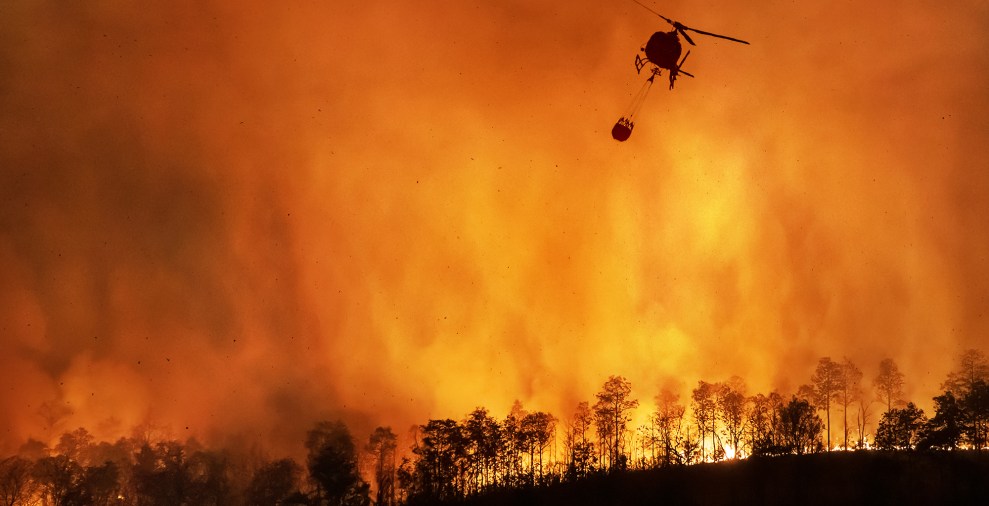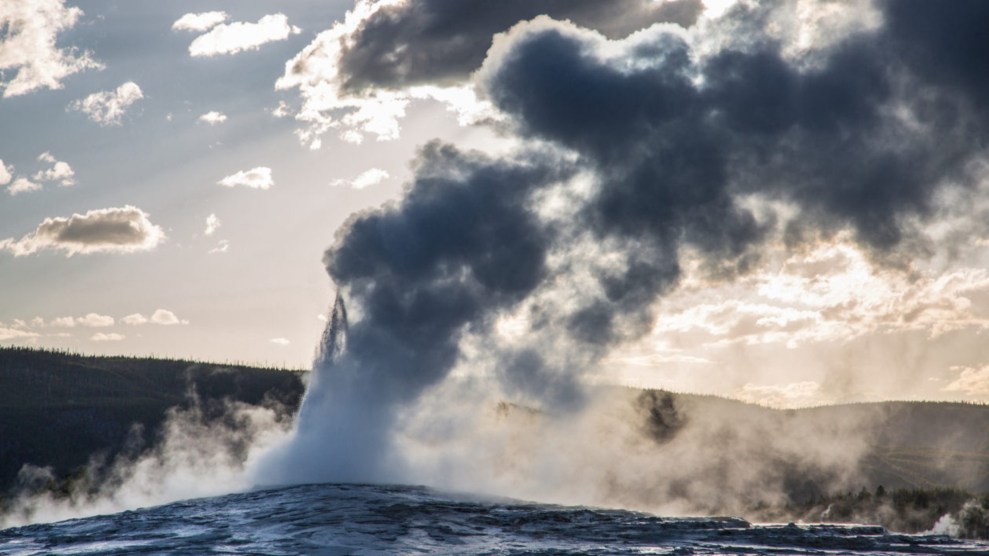
Getty Images
This story was originally published by the Guardian and is reproduced here as part of the Climate Desk collaboration.
More than 100 million Americans were advised to stay indoors amid record-breaking heat, with experts warning that such temperatures could become the norm amid the climate crisis.
By Wednesday as many as 107.5 million people, more than a third of the US population, had been warned to stay inside, as a potentially lethal combination of extreme heat and humidity settled over much of the country.
The heatwave stretched from parts of the Gulf coast in the south to the Great Lakes in the Midwest, the National Weather Service (NWS) Prediction Center said.
More than 125 million people were also under heat alerts, including heat advisories and excessive heat warnings, CNN reported. “This is a day where not only folks who are susceptible to heat-related illnesses, but really just about anybody that’s going to be outside for an extended period of time is at risk for heat-related illnesses,” Matt Beitscher, a NWS meteorologist based in St Louis, told CNN.
Record high temperatures were set throughout the US, particularly in the south-west, prompting cities to try to find ways to cope with potentially lethal heat.
In Las Vegas, Nevada, temperatures reached a high of 109F (43C), tying a record set in 1956. The NWS warned that temperatures could rise higher.
In Denver, Colorado, temperatures passed 100F (38C), tying records set in 2013 for the highest temperature and the earliest day to reach 100F.
In Phoenix, Arizona, where residents increasingly struggle to cope with sweltering heat, temperatures reached 110F (43C) for four consecutive days. In that spell, night-time temperatures never dipped below 80F (27C).
Cities in the Midwest have also struggled, with government officials racing to provide cooling options for vulnerable people.
Chicago, where three women died during a heatwave last month, opened cooling centers throughout much of the city as temperatures reached 100F (38C) on Tuesday.
City officials said the city’s 75 public libraries were available to residents needing to cool down, amid concerns about a failure to properly protect civilians during dangerous temperatures.
Officials in Detroit, Michigan, advertised cooling centers for residents as high temperatures, expected to reach 100F and humidity were expected to exacerbate heat-related illnesses.
In Minneapolis, at least 14 schools without air conditioning were forced to give lessons remotely, as the city prepared for temperatures in the high 90s.
“We’ve had some prior heatwaves this year but not as intense as this one or as long,” said NWS meteorologist Alex Tardy in a video briefing.
Warning that hotter weather will continue into mid-June, Tardy said: “These are significant temperatures and temperatures that are dangerous to everyone, if you don’t take precautions.”
Scientists have repeatedly warned that recurring and intense heatwaves could become the norm as the climate crisis intensifies. Other symptoms of increasing temperatures, including wildfires and extreme flooding, have occurred in recent weeks.
Wildfires, predicted to increase by a third by 2050, have erupted across south-western states. According to the National Interagency Fire Center, more than 2.5 million acres of land has burned this year, more than double the total last year.
In Arizona, officials have estimated that more than 24,000 acres of land had been blackened by wildfires burning in the northern part of the state. Amid a series of fires that ignited on Sunday, around 2,500 homes were evacuated and two structures damaged, said Aaron Graeser, incident commander for the blaze.
About 300 people were evacuated in California as wildfires sparked over the weekend swept a mountainous area north-east of Los Angeles, the biggest city in the state. Blazes throughout the dry region covered more than 990 acres. Fire officials from municipal, county and state agencies gathered in Los Angeles on Friday to warn about the increasing threat of wildfires amid record temperatures and ongoing drought.
In Montana, record rain caused flooding and mudslides forcing Yellowstone national park, in a rare move, to temporarily close and evacuate more than 10,000 visitors.
The park, which covers parts of Wyoming, Idaho, and Montana, closed on Monday until at least Wednesday as unprecedented flooding and rockslides knocked out electricity and damaged several parts of the park.
The most severely affected area of the national park, its northern section, may remain closed for the rest of the summer, officials said.












